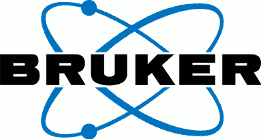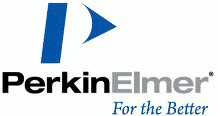KEYNOTE
DNA: Not Merely the Secret of Life
Ned Seeman NYU
10.00-11.00
We build branched DNA species that can be joined using Watson-Crick base pairing to produce N-connected objects and lattices. We have used ligation to construct DNA topological targets, such as knots, polyhedral catenanes, Borromean rings and a Solomon's knot.
Nanorobotics is a key area of application. We have made robust 2-state and 3-state sequence-dependent devices and bipedal walkers. We have constructed a molecular assembly line using a DNA origami layer and three 2-state devices, so that there are eight different states represented by their arrangements. We have demonstrated that all eight products can be built from this system.
Recently, we have self-assembled a 3D crystalline array and reported its crystal structure to 4 Å resolution. We can use crystals with two molecules in the crystallographic repeat to control the color of the crystals. Rational design of intermolecular contacts has enabled us to improve crystal resolution to better than 3 Å. We are now doing strand displacement in 3D to change the color of crystals. Thus, structural DNA nanotechnology has fulfilled its initial goal of controlling the internal structure of macroscopic constructs in three dimensions. A new era in nanoscale control awaits us.
Probing Molecular Dynamics at the Nanoscale via an Individual Paramagnetic Center
Carlos Meriles CCNY
11.00-11.20
Understanding the dynamics of molecules adsorbed to surfaces or confined to small volumes is a matter of increasing scientific and technological importance. Here, we demonstrate a pulse protocol using individual paramagnetic nitrogen vacancy (NV) centers in diamond to observe the time evolution of 1H spins from organic molecules distant a few nanometers from the diamond surface. The protocol records temporal correlations among the interacting 1H spins, and thus is sensitive to the local system dynamics via its impact on the nuclear spin relaxation and interaction with the NV. We are able to separately quantify rotational and translational diffusion dynamics by carefully analyzing the time dependence of the NMR signal. Applying this technique to various liquid and solid samples, we find evidence that liquid samples form a semi-solid layer of 1.5 nm thickness on the surface of diamond, where translational diffusion is suppressed while rotational diffusion remains present. Extensions of the present technique could be adapted to highlight the chemical composition of molecules tethered to the diamond surface or to investigate thermally or chemically activated dynamical processes such as molecular folding.
Fabrication of Advanced Quantum Electronic and Spin Systems
Diego Scarabelli Columbia University
11.20-11.40
Spin systems in solid-state have been intensively investigated as an outstanding pathway towards quantum information processing. One of the advantages of solid-state spintronics is the possibility to apply nanofabrication techniques commonly used by the semiconductor industry to produce spin qubits and control their relative positioning at the nanoscale. The negatively charged nitrogen vacancy (NV) centers in diamond stand out because of their optically addressable spins, which show long coherence time and viable spin initiation, manipulation and read-out. Here we present a fabrication technique aimed at controlling the position of the artificially created NV centers within a few tens of nanometers in all three dimensions. The vicinity of the centers allows their interaction and the creation of entangled states, enabling quantum computation algorithms to be performed. In order to achieve such a high resolution, we created closely-spaced nanometric apertures in a gold mask for the broad-beam implantation of single nitrogen spins into high-quality CVD-grown diamond substrates. The nanofabrication technique includes high resolution EBL on PMMA on a scale of 30-60 nm pitch size, and physical RIE of the 20 nm-thick Au film.
The ability to push our 100 KV EBL system to such a high resolution has been exploited also for the investigation of the quantum electronic properties of a 2D electron gas (2DEG) when its density is modulated by a periodic potential with graphene-like symmetry. This system, also known as "artificial graphene" (AG), is here implemented in a modulation doped AlGaAs/GaAs quantum well and has been predicted to produce mass-less Dirac fermions of tunable Fermi velocity. In order to accomplish such a challenging task, we etched the surface of the substrate through a mask of metallic nanodots arranged in a honeycomb artificial lattice of parameter as small as 40 nm. The BCl3-based shallow ICP-RIE of the surface produces cylindrical pillars in correspondence of which the 2DEG is expected to form quantum dots, where the electron density is higher than the surrounding etched regions. Previous experiments on larger scale AG have shown evidence of the Mott-Hubbard physics. These experiments were limited by the AG lattice parameter which is correlated to range of the linear energy dispersion relation typical of graphene. Reducing the lattice parameter by a factor of three we expect to be able to explore in more detail the quantum phenomena in this controllable solid-state system.
Using CryoEM for Structural Analysis in Structural Biology and DNA Nanotechnology
Tong Wang Brookhaven National Lab
11.40-12.00
Cryo-Electron Microscopy (CryoEM) is a special form of TEM where specimens are plunge-frozen at cryogenic temperature (liquid nitrogen) and are kept in the hydrated near-native states. CryoEM is able to achieve molecular resolution (~1 nm) routinely; in some cases researchers can obtain atomic models in structural analysis by single particle CryoEM due to recent developments of instruments and data processing softwares. Here I will give two examples to demonstrate the application of single particle CryoEM in structural biology and DNA nanotechnology: first example is the structure-based prokaryotic proteasome activation by cofactor in an ATP-independent fashion. At an intermediate resolution, I confirmed that the cofactor enlarges the substrate entrance of prokaryotic proteasome core particle. In addition I identify the cofactor-binding site on proteasome. Another example is visualization of 3D architectures of nanoparticle clusters organized by robust DNA frames. DNA-templated assembly of nanostructures is one of the efficient ways to achieve programmable spatial arrangement of species (e.g. nanoparticles). However the 3D architectures are not easy to be characterized. CryoEM is superior since it obtains 3D structures of matters with minimal structure disturbance. In addition the adapted computational analysis provide a very useful tool in the future to characterize 3D bio-hybrid systems.
Nanocomposite Capacitors: Design, Scaling, Film Fabrication and Testing, and Applications in DC-DC Power Conversion
Stephen O'Brien CCNY
12.00-12.30
The topic of high efficiency power conversion in electronics and electrical engineering is considered indispensable to the role it plays in renewables integration. Electric power conversion, e.g. DC-DC and AC-DC conversion, demands improvements in efficiency that target all aspects of the RLC components in electrical circuitry. Exploring the advantages or limitations of dielectrics for capacitors to higher frequencies and tolerances (power, temperature etc.) becomes an important scientific endeavor. Pushing capacitor function to higher frequencies, a desirable goal from an electrical engineering point of view, presents a new set of challenges in terms of minimizing interfacial, space charge and polarization effects that contribute to loss, while optimizing the dielectric constant for maximum capacitance density. We present a methodology for preparing parallel plate capacitance devices built from high dielectric constant oxide nanoparticles. The method relies on bottom up synthesis of the dielectric nanocrystals in solution, followed by evaporatively driven self-assembly into thin films with a high volume packing fraction, in order to optimize performance. We review rational synthetic design, multigram scaling, dispersion formulation design for deposition by printing or spin coating, device fabrication and integration with power circuits.
Forces and Heat to Understand and Build Nano-World
Elisa Riedo Georgia Tech
13.45-14.15
Understanding and manipulating solids and liquids at the nanoscale is a matter of continuously growing scientific and technological interest. The focus of my laboratory is to understand and design structure-chemistry-function at the nanoscale. Progress in nanotechnology depends on the capability to fabricate, position, and interconnect nanometer-scale structures. Thermochemical nanolithography, TCNL, was invented in my laboratory in 2007. TCNL uses a localized source of heat to activate a chemical reaction and fabricate micro- and nano-structures of a variety of materials and functionalizations. Here, I will discuss our new findings on the use of TCNL for biomedical applications, 2D materials nanopatterning, and designing magnetic and optical metamaterials.
In the second part of my presentation I will discuss our pioneer studies on the elasticity of 1D and 2D materials, and the viscoelasticity of nanoconfined water. To relate the size, shape, chemistry and structure of nano-materials/molecules with their mechanical properties we have developed some powerful new AFM based methods, such as AFM-nanorheology and modulated nano-indentation. Results and methods will be presented in this seminar.
Fabrication, Properties, and Applications of van der Waals Heterostructures
James Hone Columbia
14.15-14.45
Two-dimensional materials such as graphene offer a wide range of outstanding properties but are highly sensitive to disorder from the environment. We have developed techniques to stack 2D materials on top of each other to create 'van der Waals Heterostructures' with nearly perfect interfaces. Moreover, we can achieve high-quality contacts to the one-dimensional edge of buried layers. This talk will first describe the techniques used to create such heterostructures. Next, four application areas will be described: 1. Near-ideal performance achieved in graphene through encapsulation in insulating boron nitride (BN); 2. Applications in plasmonics, photonics, and light emission; 3. Greatly improved measurements of the electrical transport in semiconducting MoS2 through BN-encapsulation; 4. Measurements of other 2D materials.
The Use of Single Particle ICP-MS for Measuring Engineered Nanoparticles in Biological Systems
Lee Davidowski PerkinElmer Inc.
14.45-15.05
Single Particle-ICP-MS, a new operating mode in ICP-MS that is dedicated to the analysis of engineered nanoparticles (ENPs) commonly used in Nanomedicine and drug delivery systems.Single Particle (SP-ICP-MS) allow the differentiation between ionic and particulate signals, quantitate both ionic and particulate fractions, measures particle composition, concentration (part/mL), particle sizes and explores agglomeration and size distribution. The present work explores the use of SP-ICP-MS as a metrology tool for the analysis of engineered nanoparticles in biological matrices (blood, urine). Preliminary results show that Au ENPs (30 and 60 nm) are stable in diluted blood and urine. No change in the size of Au ENPs and/or concentration was noticed during the 24h study period. SP-ICP-MS is rapidly becoming a key analytical instrument in assessing the fate, behavior and distribution of (ENPs) in several types of matrices including biological fluids such blood and urine.
Enhancing Cerenkov luminescence for in vivo Imaging using High Refractive Index Nanoparticles
Travis Shaffer CUNY/MSKCC
15.05-15.25
Cerenkov luminescence (CL) is produced when a charged particle has a greater velocity than light in that particular medium. The threshold energy necessary for CL is mostly dependent on the refractive index (RI) of the medium, as expressed by the Frank-Tamm equation. As the RI of a solution or material increases, the threshold energy needed for CL is lowered, resulting in a greater percentage of emitted particles reaching this threshold. This results in an increase in CL, as shown in numerous studies involving solutions and bulk materials. The clinical utility of CL has recently been shown using various medical radioisotopes for applications for imaging and therapy. However, the very low levels of CL is a continual challenge for in vivo use, and increasing CL output through attachment to nanoparticles with a higher RI could result in improvements in imaging and therapy that utilize CL.
We recently published a general method to radiolabel silica nanoparticles (SNPs) with various medical radioisotopes without the need for a chelator. The SNPs were tested in vivo via positron emission tomography (PET) imaging, which showed the stability and utility of the particles for PET imaging. Here we show SNPs (140 nm diameter) radiolabeled with yttrium-90 and lutetium-177 yielded greater Cerenkov luminescence (125-200% depending on the isotope) than the radioisotope in solution, with the tissue models also showing increased CL over control solutions. As SNPs have a higher RI compared to water (~1.5 to 1.33, respectively), the Frank-Tamm equation predicts this increase in CL with SNPs. As SNPs are inexpensive and generally recognized as safe by the Food and Drug Administration, they are be an attractive platform for in vivo CL imaging.
As interest in CL for medical applications increases, the strategy of radioisotope attachment to nanoparticles with high RI may become an important strategy for Cerenkov work. Additionally, the routine use of SIO2 as a nanoparticle coating means that this method for enhancing CL can be used for a large array of nanoparticles such as quantum dots and gold nanoparticles. With the theoretical background established by this work, nanoparticle systems for an array of applications including photodynamic therapy, imaging, and light-activated drug release may benefit.
Robust Excitons in Soft-Molecular Nanotubes
Dorthe Eisele CCNY
15.25-15.55
The most remarkable materials that demonstrate the ability to capture solar energy are natural photosynthetic systems such as found in rather primitive marine algae and bacteria. Their light-harvesting (LH) antennae are crucial components, as they absorb the light and direct the resulting excitation energy efficiently to a reaction center, which then converts these excitations (excitons) into charge-separated states. Nature's highly efficient light-harvesting antennae, like those found in Green Sulfur Bacteria, consist of supra-molecular building blocks that self-assemble into a hierarchy of close-packed structures.
In an effort to mimic the fundamental processes that govern nature's efficient systems, it is important to elucidate the role of each level of hierarchy: from molecule, to supra-molecular building block, to close-packed building blocks. Here, I will discuss the impact of hierarchical structure. I will present a model system that mirrors nature's complexity: cylinders self-assembled from cyanine-dye molecules. I will show that even though close-packing may alter the cylinders' soft mesoscopic structure, robust delocalized excitons are retained: internal order and strong excitation-transfer interactions-prerequisites for efficient energy transport-are both maintained. These results suggest that the cylindrical geometry strongly favors robust excitons; it presents a rational design that is potentially key to Nature's high efficiency, allowing construction of efficient light-harvesting devices even from soft supra-molecular materials.
Living materials for technology at the micro- and nanoscale
Fiorenzo Omenetto Tufts University
16.30-17.00
Biomaterials offer opportunities for devices that operate seamlessly at the interface of the biological and technological worlds. Stringent requirements on material form and function are imposed when operating at the nanoscale or when interfacing such materials with microelectronic circuitry. Silk fibroin is a very attractive biopolymer for use as the starting point for nanostructured optical materials and thin-film electronics. Devices such as silk-based photonic crystals, lasers, wireless antennas and resorbable electronics will be described as some examples of the possibilities that this water-processed, biocompatible material offers.
Nanotechnologies for Biomedical Imaging and Optical Sensors
Daniel Heller
Memorial Sloan Kettering Cancer Center
17.00-17.30
Two major promising applications of nanotechnology towards the treatment of cancer are the control over molecular binding sites and the detection of binding phenomena, which could lead to better therapies, earlier cancer detection, and better tools for cancer research. For these pursuits, new methods are needed for the quantification of disease biomarkers and other bioanalytes.The real-time and spatially-resolved detection and identification of analytes in biological media present important goals for next-generation nanoscale sensors. To this end, we employ the intrinsic near-infrared fluorescence of single-walled carbon nanotubes. The emission of semiconducting nanotubes is photostable yet sensitive to the immediate environment. Analyte identification is achieved by modulation of the nanotube's spectral response, resulting in distinct optical fingerprints. The responses can be spatially mapped in live cells and tissues, and measured in real-time with sensitivity down to the single-molecule level, facilitating unprecedented bioanalytical studies.
Investigating and Applying Bio-Nanomaterial Interactions
Rajesh Naik AFRL
17.30-18.00
Understanding the structure-function relationships of biological materials can enable approaches in the design of materials for use in a variety of applications including biosensing, catalysis and biomedicine. Biomaterials exemplify the utilization of designed templates for building and tuning materials properties. Nanomaterials exhibit unique physiochemical properties, but its integration of biomacromolecules has opened up new avenues in the assembly, design, tunability and integration for a variety of applications. Our research activities are aimed at understanding of how biomolecules interact with nanomaterial surfaces and how they can be used in the creation of functional materials. In this talk I will describe our studies on understanding and tuning bio-nano interfacial interactions, and demonstrating functional properties of bio-nanomaterials for catalysis, sensing and energetics.







